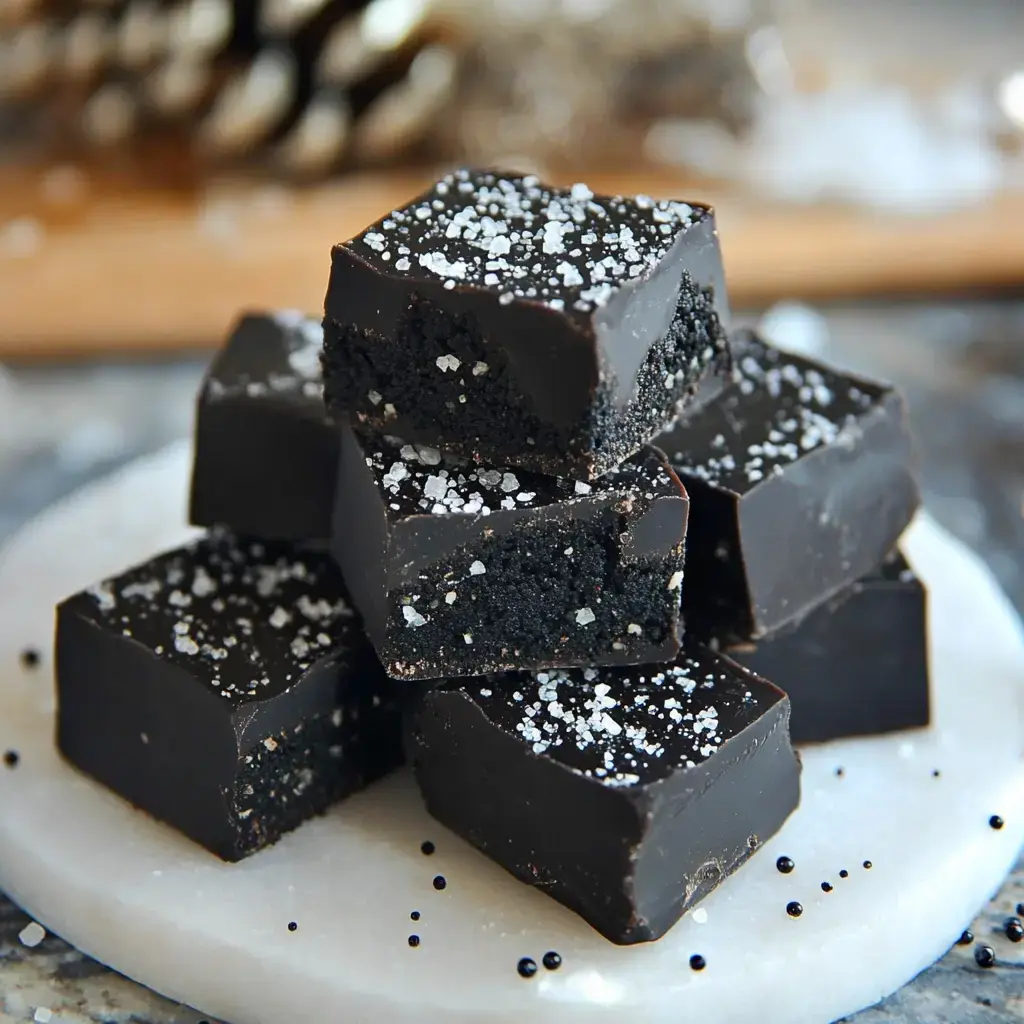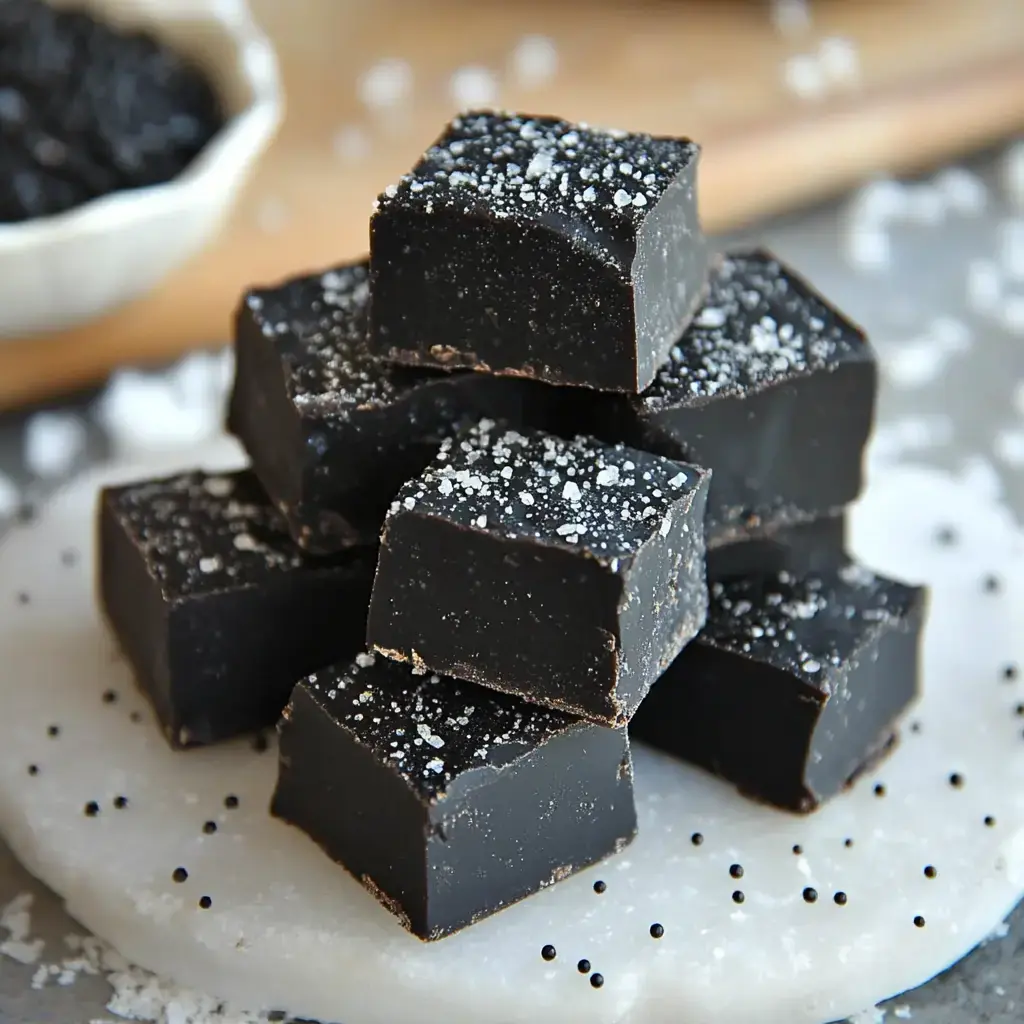 Pin it
Pin it
This creation emerged from a desire to introduce sophisticated whimsy into traditional holiday confections. The initial development focused on achieving the perfect balance between visual intrigue and refined taste, transforming premium white chocolate into an elegant noir masterpiece. Each preparation has refined the technique, resulting in a confection that maintains professional standards while incorporating playful elements.
What Makes These So Special
This confection achieves distinction through its striking visual presentation and refined flavor profile. The transformation of premium white chocolate into an elegant noir creation, while maintaining exceptional taste and texture, creates an engaging culinary experience. The addition of strategic decorative elements provides sophisticated sparkle, elevating this whimsical concept into a refined dessert offering. Each piece presents unique character through careful shaping and finishing techniques, ensuring no two pieces appear identical while maintaining consistent quality throughout.
Essential Components
- Primary Elements:
- premium white chocolate, highest grade essential for proper melting properties
- sweetened condensed milk, fresh product crucial for optimal consistency
- unsalted European-style butter, superior fat content ensures proper texture
- pure Madagascar vanilla extract, enhancing depth of flavor
- fine sea salt, balancing sweetness effectively
- professional-grade black coloring, gel format recommended for intensity
- Decorative Elements:
- black pearl sugar or metallic sprinkles for sophisticated finish
- edible silver dust for enhanced visual appeal
- Essential Equipment:
- heavy-gauge saucepan for proper heat distribution
- silicone implements for precise manipulation
- professional-grade parchment
- digital thermometer for temperature monitoring
Creation Process
- Preliminary Preparation
- Prepare workspace with precise mise en place. Line vessel with professional-grade parchment, ensuring proper overlap for removal.
- Base Development
- Combine primary elements over controlled heat, maintaining precise temperature throughout process. Monitor consistency while incorporating ingredients systematically.
- Color Integration
- Introduce coloring agent gradually, ensuring thorough incorporation without compromising texture. Assess color development at intervals for optimal results.
- Setting Process
- Transfer mixture to prepared vessel, maintaining even distribution. Apply decorative elements with precise placement.
- Final Formation
- Once properly set, utilize proper cutting or shaping techniques for desired presentation. Consider irregular formations for authentic appearance.
Technical Considerations
Multiple iterations have revealed crucial aspects requiring attention during preparation. Temperature control proves essential throughout the process, particularly during chocolate melting and setting phases. Coloring agent selection significantly impacts final appearance and texture. Proper ingredient temperature alignment prevents adverse texture development. Understanding crystallization principles ensures optimal setting properties. Humidity levels in preparation environment require monitoring for consistent results.
 Pin it
Pin it
Preservation Protocol
Proper storage techniques prove essential for maintaining optimal quality and appearance. Environmental control during storage significantly impacts texture retention. Utilizing appropriate containment vessels prevents absorption of external elements. Temperature stability during storage ensures continued visual appeal. Professional-grade storage containers provide superior results compared to standard options. Understanding proper wrapping techniques for extended storage prevents texture degradation and maintains appearance integrity.
Service Presentation
Professional presentation elevates this confection beyond novelty status. Temperature consideration during service impacts texture significantly. Proper portioning techniques ensure elegant presentation. Garnish selection enhances visual appeal considerably. The confection performs admirably in professional settings, receiving consistent appreciation. Strategic placement on serving vessels maximizes visual impact. Creating proper portion sizes maintains professional appearance while ensuring proper serving amounts.
Frequently Asked Questions
- → Why use white chocolate?
White chocolate creates the best base for coloring. It takes black food coloring better than dark chocolate and gives a creamier texture.
- → Why won't my fudge set?
The mixture needs to cook long enough to evaporate excess water. If it's too soft, reheat with a tiny bit of water and cook again.
- → Can I speed up the chilling time?
The full 8 hours helps develop proper texture. While you can refrigerate, rushing the process might affect the final consistency.
- → Why cook over low heat?
Low heat prevents scorching and helps ingredients combine smoothly. Higher heat risks burning the chocolate and making the fudge grainy.
- → Can I use liquid food coloring?
Gel coloring works best as it won't add extra liquid that could prevent setting. You'll need more liquid coloring to achieve the same color.
